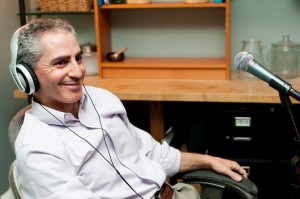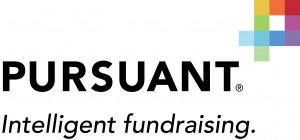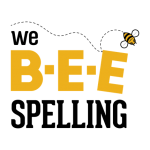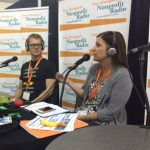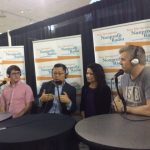Big Nonprofit Ideas for the Other 95%
I love our sponsors!
Do you want to find more prospects & raise more money? Pursuant is a full-service fundraising agency, leveraging data & technology.
It’s not your 7th grade spelling bee! We Bee Spelling produces charity fundraiser spelling bees with stand-up comedy, live music & dance. It’s all in the video!
Get Nonprofit Radio insider alerts!
Listen Live or Archive:
- On Fridays at 1pm Eastern: Talking Alternative Radio and tune in
- Listen to the October 7, 2016 archived podcast
My Guests:
Dave Dalessandro & Liz Cooper: Fundraiser Incentive Pay
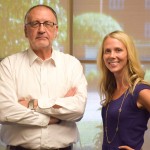
The University of Pittsburgh has created a career ladder to stem frontline fundraiser turnover—and it includes incentive pay. Explaining Pitt’s innovation and helping you think through whether this makes sense at your organization are Dave Dalessandro and Liz Cooper, fundraising administrators at the University. (Originally aired August 28, 2015)
Top Trends. Sound Advice. Lively Conversation.
You’re on the air and on target as I delve into the big issues facing your nonprofit—and your career.
If you have big dreams but an average budget, tune in to Tony Martignetti Nonprofit Radio.
I interview the best in the business on every topic from board relations, fundraising, social media and compliance, to technology, accounting, volunteer management, finance, marketing and beyond. Always with you in mind.
Get Nonprofit Radio insider alerts!
Sponsored by:
View Full TranscriptProcessed on: 2018-11-11T23:41:05.495Z
S3 bucket containing transcription results: transcript.results
Link to bucket: s3.console.aws.amazon.com/s3/buckets/transcript.results
Path to JSON: 2016…10…310_tony_martignetti_nonprofit_radio_20161007.mp3.907456618.json
Path to text: transcripts/2016/10/310_tony_martignetti_nonprofit_radio_20161007.txt
Oppcoll hello and welcome to tony martignetti non-profit radio big non-profit ideas for the other ninety five percent on your aptly named host oh, i’m glad you’re with me. I’d be thrown into neff row megally if you let me down with the idea that you missed today’s show fundraiser incentive pay university of pittsburgh has created a career ladder to stem frontline fundraiser turnover, and it includes incentive pay, explaining pits, innovation and helping you think through whether this makes sense at your organization or dave dalessandro and liz cooper fund-raising administrators at the university on tony’s take two the ntc videos we’re sponsored by pursuing full service fund-raising data driven and technology enabled, you’ll raise more money pursuant dot com, and by we be spelling super cool spelling bee fundraisers. We be e spelling dot com here is fundraiser incentive pay from the august twenty eighth twenty fifteen show. I’m very glad to welcome dave dalessandro and liz cooper to the show. Dave is associate vice chancellor for university development at the university of pittsburgh and liz cooper is senior executive director for development at the university. David liz, welcome. Thank you. Thank you for having us for having a it’s? A pleasure, dave. I don’t. I’m not sure we’ve ever had a a chancellor or vice chancellor on the show before. This sounds like a very regal terms. You got a crown born there. What? You’re sitting on a throne. What? Mrs chancellor? Well, associate vice chances are a lot like vice presidents and banks. Okay, a lot of you. Okay, but they prefer chancellor. Essentially, i sit over all of the individual fund-raising for the university, uh, plan giving prospect research all the analytics no, and lose his second in command. Okay, uh, it’s, just interesting that some places, i guess mostly i see it, and i guess it is in universities. Prefer chancellor over president. I don’t know right now. I don’t know where that. Okay, i don’t know it just right. It sounds, uh, sounds like royalty. All right, liz, you and i are ah, you and i are the now the libyans know. What is your responsibility, liz? As senior executive director for development? Sure. So i oversee all of the central fund-raising operation. So i hyre orient and supervise all of our fundraisers that are located here. Centrally. I also oversee fund-raising efforts. That go on in some of our smaller schools, for example, school of education or the school of social work. And i also work closely with our regional campuses, all right? And of course, ah, i wanted teo let you know that i’m a carnegie mellon alum and no, carnegie mellon is just down the street from pit, so we’ll have no, we’ll have no trouble with you. Please way won’t hold it against don’t yeah, that’s sure it is. Two against one. So, what am i talking about? Yeah. All right. All right. Dave, why don’t you get us started? This incentive pay and the career ladder. And why was this important to do it pit, huh? I’m gonna have i’m gonna have loose start off on that. I look at this already is an anarchist anarchist already? I okay, this is what is what happens when you deal with this. What happens when you’re dealing with a chancellor? I see. Ok. Ok, go ahead, liz. You start off. Um, you know, i think that it seemed like every moment i was checking my email. I was receiving an article or a blogger about some big hyre education fund-raising. Issues um, two of which were the recruitment of major gift officers and the retention of major gift officers. During our campaign, we were fortunate to have a group of very successful and talented individual major gift officers that are loyal to the university. But as you know wherein one campaign ends, you start thinking about another, and we knew we were going to grow. So we wanted to address these issues recruitment and retention of major gift officers at pitt before they became ah common seem to us, if that makes sense. In other words, it was a common theme across hyre education, and we didn’t want it to be an issue here. And what do you see as the downside of just make sure everybody’s eyes on the same page with this the downside of a frequent turnover of fundraisers? I think continuity is a big themes that you’ll find in development. Continuity is good for donors. It’s good for the employees. It’s. Good for the organization. Good for the bottom line. Um, when an individual major gift officer leaves the university, uh, that relationship that they developed with that individual major gift donor repaired and start over. Again, so all right, so yes, we want this continuity and donors prefer it donors prefer it sure they because they begin a relationship not only with pitt, but with that individual major gift officer. Yeah, for sure, dave, if you think i’m going to bring you in this conversation, you’re out of your head so you can hang up or whatever i don’t, it doesn’t matter to me. No, it sounded like there was something you were going to say, dave, you want to add something? Well, i think that one of the things that we learned was that it’s actually less expensive over the long run to retain your existing fundrasing not only have you spent time training them, and we spend a lot of time training our major gift officers, but the process of recruiting the process of, you know, matching salaries from from folks coming from larger cities or larger institutions actual becomes more expensive over time, so it seemed us that one of the things we wanted to do wass to control, uh, for those those problems when we were going from eleven major gift officers to probably thirty two, so you multiply all those problems when you’ve got three times more fundraisers and you’ve got a real problem of scale if people are coming and going, so that was a big hit was a big issue for us that, you know, once we had made this initial investment, we didn’t want to have to recoup it over and over again with new folks. Liz, you said you’re responsible for the hiring and training, so why don’t we? Why don’t we start with this? The career ladder idea and the incentive pay around around fundraiser orientation? What what’s what’s different now that you have this a method of evaluation and compensation? Sure, when there’s so many young, talented folks out there that have maybe two or three years of development, these millennials, when they came to me in an interview, would ask me, where will i be a pit in five years? Or where will i be a pit? In seven years? Prior to the career ladder, i would stare back at them, and i would not be able to answer them except with simple response of we hope that you’ll still be here. So, you know, this was a really when when this was established this was a really interesting way for us to tell that applicants there is a future for you here, and we have thought it through. How long have you been doing incentive pay and the and the career ladder, which we’re going to talk about? So we worked on the career rod, or for about eighteen months, and it was implemented in january. Okay, so we’re talking, oh, wow. All right, so just eight months or so, all right, but a lot of little lead time, a lot of thought went into it. So go back to the orientation question then was, how is training of new fundraisers different now? So a part of what we wanted to ensure was that we were orienting exceptional fundraisers and that’s, really, what the career ladder is based on is really those performers that are going above and beyond a successful and being exceptional part of that is us training them for the first three months of their employment to get up and running as quickly as possible. So learn how pit fund-raising tto learn how we do it. So we establish what we lovingly refer to as the academy it’s a week long intensive training, hands on experience taught by our own staff on all the things that we think they need to know as individual fund-raising individual gift fundraiser, for example, that they get a crash course on plan giving they get a crash course on our endowment, making the ask proposals agreement’s, etcetera so that we feel that after that week, they really do have a great face in what it takes to be an individual major gift officer here. And what about god? I was just going to add that part of that so is the explanation is the explanation of the career excuse me? Is the explanation of the career ladder? Yes, there is actually a booklet that they get that sets out, uh, all the requirements for them to in a period of three years be eligible for promotion. Okay? We’re we’re. We’re gonna we’re gonna go out a little early for a break. When we come back. We’re going to talk about what these elements are to being exceptional, there’s six of them and we’ll talk about how they fit into the career ladder. All that stay with us. You’re tuned to non-profit radio tony. Martignetti also hosts a podcast for the chronicle of philanthropy. Fund-raising fundamentals is a quick ten minute burst of fund-raising insights, published once a month. Tony’s guests are expert in crowdfunding, mobile giving event fund-raising direct mail and donor cultivation. Really, all the fund-raising issues that make you wonder, am i doing this right? Is there a better way there is? Find the fund-raising fundamentals archive it. Tony martignetti dot com that’s marketmesuite n e t t i remember there’s, a g before the end, thousands of listeners have subscribed on itunes. You can also learn maura, the chronicle website, philanthropy dot com fund-raising fundamentals, the better way. Dahna liz let’s, let’s, turn to you. Would you please take off the six elements to prove that you’re an exceptional fundraiser? Sure. Well, we have. The first is our fund-raising visit number. Dollar raised. Agreement sent. Agreement’s accepted the total contact that they have in our in our database, and the last is origination guests. Okay. Thank you. Um, let’s, let’s. Define some terms. What’s, an origination gift and origination gift is a gift that the development officer excuse me. Let me go back. The origination gift is a gift where the prospect was never placed in what we call active management. In other words, ah, other universities use the term maybe a legacy or one that was kind of handed down from a previous development officer to another. Origination gifts are those gifts that were the relationship that was established by the gift officer cultivated, solicited and closed. So their new giver to the university at the major gift level. All right, all right. And to be exceptional, you what? You have to achieve a certain level or exceed. Or how do you prove that you’re exceptional across these six categories? Yeah. It’s. Okay. I’ll let dave kind of handle that. And what we what we determined to be exceptional. That’s. Ok, i’ll trust him. Go ahead. Yeah. One of one of the things that that the career ladder does is takes a traditional major gift officer position and breaks it into six steps. So at each step, step one step two, step three. Step forward, so on there are a set of performance standards, the initial performance standards are considered. This is your level of competency. This is what you’re supposed to be doing, and then you have the exceptional being in terms of money raised double that amount and all of these other factors are not all that different at both exceptional in regular. In other words, what we’re really trying to figure out is are you doing to baseline of activity? And how effective are you have taken that baseline and raising mohr gifts than the person sitting next to you? So at each level and exceptional person is always raising double the amount of money that another person in the class is raising for one so the ones might be exceptional. They can average five hundred thousand if they could propose to it to their only exceptional, they raise a million if they get to three, they’re only exceptional raise two million. If they get the for their only exceptional, they raise three million. Alright, so in this system it’s entirely possible to be promoted and be exceptional as a cr m one and never leave the c r m to level because you’re not exceptional at that level. All right, so let me just way have jog in jail on tony martignetti non-profit radio c r e m is probably pretty widely known but let’s, just make explicit. I assume that’s, constituent relationship manager, charitable relationship, charitable. See, i did not have a charitable relationship manager. Okay, okay, go ahead. Sorry. And, uh, yeah. That’s that’s. Kind of where we got away from the major gift officer term. Because we felt that terrible relationship manager actually is a title that expresses the job. Yeah, related. They’re managing charity relationship. Yeah, kind of like that. A charitable relationship manager. Okay, so do you to be exceptional. Do you have to do double the double the goal in all six of these categories? No. No. Okay. How does it work now? How does it work? What’s the formula. The formula is that let’s say you come in as what we call the c r m one. So you’re cr one and we tell him here’s what you need. All right. Need forty five fund-raising visits two hundred thousand new pledges. Six. Agreement sent four agreements. Accepted. A thousand total contacts into origination. Now, if you are exceptional, you’ll have forty five were mohr fund-raising visits. You’ll raise five hundred thousand maurin new pledges and gifts. You’ll have six agreement scent, or mohr for agreements, mohr, a thousand total contracts and three origination gifts. So if you manage to make all those numbers all right, over a period of three years, in other words, sex, your average of doing at over three years. Yes. Then, at the end of the third year, you’re eligible for a promotion, it would be promoted to c r, m to two. Okay, okay, what is probably should just define this earlier, but what is the total contacts? Total contacts are all the things that you put in the database, which indicate an attempt to maintain communication with the donor. So emails, letters, phone calls, visits, okay, that’s, pretty liberal, and then and then one of the categories i think the first one lives mentioned is is actual visits fund-raising visits, right? That that assumes that that’s a face to face meeting, yes, okay, but here’s the difference and, you know, we’ve had people say, boy, that number that numbers, so we have to make two hundred, visit. Well, the only way you get credit for a fund-raising visit is that you have an actual discussion about a major gift, and in fact, all of our folks are supposed to call and say i would like to come and talk to you about your philanthropic relationship with the university of pittsburgh, so these aren’t alumni visits, these aren’t people you casually run into at a football game or a basketball game. We still count those, but you don’t get credit. We’ve got you know, we’ve got a staff that actually vets all the contact reports, determine whether you get credit or not for that visit i used to be a planned e-giving director at two colleges before i before i became a plan giving consultant. Yeah, i do. I do play e-giving telling now, but i used to be plain giving director i i’m trying to decide whether i would have loved this or hated it. I think it’s i think i would have loved it because i kind of like the office competition. Although buy-in both these shops, i had started the plan giving program, so there was no other planned e-giving fundraiser. But you could i’m sure we could have worked out a way of comparing my work to that of frontline major gift officers, but sure. Okay, now i think i would have i don’t know if i would have succeeded, but i think i would have liked it. I don’t know. I might have been out after three years. Why did yu let’s turn to lose? But is why? Why a thirty six month average? And and also, how does that work? If someone goes out on maternity leave or or family medical leave or, you know, has an injury or something like that. But first, why the why the thirty six months we felt like three year rolling average. It was a great way to measure exceptional performance and that you’re not relying on a successful year and you’re not relying on a particularly poor year, either. So for example, let’s say, ah, major gift officer has ah, year where they raised one point, one point, one million dollars it’s a great fund-raising year well, then, if you take the three year rolling average, you can’t just do nothing for the next two years and and know that you’re going to get promoted. There’s still work to be done? Um, so and on the flip side, if you have a year where you raise only two hundred thousand dollars, you still have plenty of time to make it up, so we thought it was fair in that sense. Come on, the thirty six months is what hr helped us to find it as active employment. So if they are, go on maternity leave, for example, essentially their performance cycle thes thirty six months pause and it picks right back-up and thirty six months so that’s, another thing that i want to mention is that we don’t run on the fiscal year, for example. We run on a calendar year from the date of their hyre they’re hired on march first, they’re judged on twelve year cycle for a year, one from march first to march first, so if they were to go on maternity leave on march first and then it would pause for the next three months, it would then pick up on june first, and that would be the end of their thirty six months of that makes it okay. So each person’s anniversary is the date of hyre correct and and there’s a if there’s a chunk missing for medical leave or whatever, then you would just tack on more time at the end. You got it. Okay, okay. Does that does that trouble you at all that or how did you think through this one? Everybody’s got a different anniversary date. I mean, putting aside the record keeping well, we’ll get to that. I mean, that’s a ministerial we could deal with that. But the different people have different anniversaries when they’re thirty six months is up. Does that? Does that concern fundraisers at all? Is that concern you? Well, i think that they believe that that’s actually extremely. Fair so let’s say you start in september if you were running on a fiscal year, you’ve only got nine months of performance, so at the end of three fiscal years, you actually haven’t worked for thirty six months. You work for thirty three months this way, your guarantee that you get the full thirty six months for your promotional review and, uh, from what i know from the folks who who work here and now live under this, they love the certainty of all this, they know when they’re going to be up for a promotional review, which almost never exists in any organisation i worked at before, one of which was carnegie mellon you got you got booted out all for emotion. No review was something that you might ask your supervisor. Hey, i’ve been doing pretty good for two years, you know, when you’re going to look at, you know, what else can i be? How can i be promoted? And that was always this fog kind of answer this way. They know at the end of that thirty six months they’re going to sit down and they’re going to be able to review their last three. Years of work. I’m sorry. You got booted out of carnegie mellon. Pardon? I said, i’m sorry. You got booted out of carnegie mellon. Yeah, well, that crazy ideas. Okay, i’m so uncertain. That didn’t happen. So so is there not a performance evaluation? Interim during the thirty six months there is there’s still an annual praise a ll, um and and that’s kind of the more, um, qualitative way of looking at this. So each annual appraisal has five performance factors, and these performance factors are what we’ve identified to be an exceptional individual, major gift officer. They are perseverance, problem solving, functional technical skills, interpersonal communication and kind of most importantly, donor focus. So that it’s not just about the numbers and i will and i when i would like to say that individual major guest officers tend to be numbers driven people. And they like this career ladder because it’s very transparent and it’s very numbers driven. But to us, it’s not just about the numbers to us it’s about ensuring that there still meeting the needs of the donor and these annual appraisals help us determine that there still totally donor-centric now i would think that even in these annual appraisal, though, you’re you’re evaluating the reviewing with the fundraiser, their performance, how they’re doing time versus goal over there for their thirty six month period. Yep, you got it. Okay, so there’s that there’s that too. But but okay, but also call it a more qualitative assessment. Then then the thirty six months, which would be that’s, that’s, pretty quantitative and numerical in the thirty six month review. Okay, well, the thirty six month review so here’s how it fits together, tony. All right, so at the end of the thirty six months so everybody every morning gets there gets their current running total on their screen so they know exactly where they stand. Oh, my, everyone. So at the end of the first year, they will get their current totals and their their average. At the end of the second year, they’ll get their current total stand. How that averages so they’re always they always know how hard they have to be working to get where they need to get. Okay. And, uh, that becomes that’s important, because when they sit down for there promotional review their very well aware of whether or not they’re going to make it or not, because the numbers are there, right? You have seen it and seen it every day during your appraisals. You cannot have needs improvement in any aspect. If you get it needs approval, you will not be promoted because exceptional employees don’t need to improve on one of these five aspects, right? And the biggest one that trips everybody up dysfunctional technical skills. Handup uh, one of the things that’s functional technical skill is putting accurate information and timely in a timely manner on what you’re doing. And so we just have some folks who simply can’t get around the port again trip report or they put in inaccurate trip reports, and so they get a needs improvement and therefore they don’t get promoted because they’re not exception, i see, right? Even if, even if the numbers are there, even if the numbers you can’t need, you can’t need improvement in any of the five qualitative areas that liz mentioned. All right, so what’s the problem with the the triple i mean, i that that used to be really valuable to me when i came back. Although, you know, if you get behind, then you’re really screwed because you have to forget and hopefully had decent notes, but but okay, we just have about two minutes before a break, but that that’s what? You’d be surprised how long? Two minutes last what? What trips people up with the use of inaccurate trip reports? Like, how does that happen? One of the things that the one of the rules is that one of the only way you could get counted for a credit for a fund-raising visit one of the fifty six is you have to enter a next task. So a lot of folks, not a lot of folks, but there are those people who go to the visit and don’t think about what they’re going to do next, and so over time, these people who are actually competent fundraisers, all right, they meet their basic number, they get a backlog of information that they owe us, and they never catch up. Yeah, i mean, they never catch up. Now, if you keeping up with your visits yeah. It’s it’s hard plus, you know, administrative tasks and things. I definitely if you get yeah. Like i said, if you get behind and you agree right. Would you have just a minute? Liz, what happens if i come to you and tell you i got an offer at a competing? I got offered carnegie mellon and not surprisingly, you know, they’re going to pay me one half times what i’m making at pitt. How does that fit into the career ladder? What kind of nice about the career ladder is that we can say to that employee? Well, this is where we value. This is where we see you. This is where our our standards are. And this is where we see you at pitt. So if you feel that, uh, that a move to carnegie mellon or to wherever is the appropriate step for you at this time, we’re sorry to see you go, but this is where we value you. Okay? This being your current salary, we’re not current. We’re not matching. We’re not matching competing offers. No. Right? Ok. All right. Sounds fair. We got more coming up. Of course, we’re going to talk a little about the ethics of of all this and, uh, maybe get some donor reactions as well. And talk about the infrastructure you gotta have maur fundraiser. Incentive pay coming up first. Pursuant, they’re a smart company. They sponsor non-profit radio that’s all you really need to know. But beyond that, they rely on data metrics analysis. This is all quantitatively based, not tradition and popular wisdom based if we all relied on tradition, then places like pitt would not have career ladders and incentive pay. You need to raise more money, pursue it will help you, for instance there urine calculator, year end accelerator the year end accelerator pursuant, dot com slash you’re an accelerator, we be spelling spelling bees for non-profit fund-raising you wantto welcome millennials into your organization. These are ideal it’s, not your grandma’s spelling bee. You check out their video, which you’ll see. These events include live music and dancing stand up comedy fund-raising and they managed to work spelling in there too. He’s a great events from millennials, usually in a bar or restaurant, maybe a bowling alley. The furry fund is at we be spelling dot com now tony’s, take two. You know, i was at the non-profit technology conference in march. We shot thirty video interviews and the first ones are finally up my video and links to the first bunch of conference interviews are at tony martignetti dot com that’s. Tony’s take two here’s the rest of fundraiser incentive pay. David. Liz, you’re still with us, right? Yes. Ok. You ok? Thank you. I know you were sametz sam, let me know, but i just like to say a little affirmation. Um, let’s. See, i don’t know who wants to talk about this, there’s? Not really too much. But i just wanted to make it clear when you talk about incentive pay, i think there’s a possibility that people might be thinking of the ethical considerations and constraints that the association of fund-raising professionals f has on dh. The relevant sort of passages, i guess are that members of a f p shell not accept compensation or enter into a contract that is based on a percentage of contributions. Nor shall members except finder’s for your contingent fees. Well, this clearly that’s that’s. Really not that’s, not what’s going on here, right? Right. That’s not what’s going on. And no, there is no relationship between the amount of money anybody raises and there increase in salary. So this is not a okay. You did really good this year. So here’s twenty thousand dollars based on one percent of your increases, this is an actual an actual increase in their salary, their annual salary level and hr work with us to ensure that that compensation levels stayed within the university’s ranges for jobs that were classified like our jobs were classified and hr actually had no problem with this, we thought that would be a stumbling block, but they really didn’t see a problem with that. Because, you know, the alternative is that people walk in and say, i have an offer from cmu and it’s one and a half times what you’re paying me and what are you going to do and a most instant? Most places that i know and i’ve worked for a bunch of folks sit around a table and say, what do we want to keep that person or not? And, you know, that’s, basically what it’s what it’s, what it’s, based on right, and they kick it up, and so that drives a long term that drives your cost over because it’s not controllable, it’s not predictable and it’s hard to set up long term budgets when you say fifteen percent of the people in our community and asked for more money. So ethic. But we’re trying to do is say to somebody, if you, uh, you have a career here. And there is a a future that you can envision based on your perform. All right, hyre what has the fundraiser reaction been now since since january? And neither one of you wants to commented? Well, i can let let me talk about two examples without naming any schools involved. We hired someone from an ivy league school, and, uh, she basically said that she had no idea how she would get promoted at the school. She was that she had never seen anything like the career ladder where it says, if you do these things every three years, we’re going to look at the possibility of promoting you within the major gift class, so that made us feel really good, you know, that someone from an ivy league school thought this was great. Hyre and we, you know, recently hired someone for from a private school who also said the same thing now what’s nice about the career ladder is we were able to bring that person in at a four uh, because she had ten years of experience as a major give fund-raising yes, so we’re not limited to just bringing people in in one, and when we sent the numbers over to h r, they said, well, that person fits exactly. Into who we defined as a four so we don’t have any problem with that compensation, and it actually worked out wonderfully dahna and most people when we come in and handed this booklet during the interview, they’re just amazed that that this thing has been thought out to the details been thought out has anybody i’m going to challenge us to see on the other side has anybody either applicant or employees. When it was implemented, i objected and on departed because of it, no one’s left yet, okay and apprehend list as you’re interviewing applicants, potential fundraisers, anybody said, i don’t think this works for me again. I mean, the young applicants are mother of their millennials or it’s a generational thing, you know, they want to know what their future is going to be like in an organization, and so most of them are very appreciative that we’ve kind of thought it through another existing staff. You know, the reaction has been very positive and i think it’s in large part because it’s so transparent, all right? And yes, it sze clear everyone, everyone knows they’ve been knows, and i think that he knows the state level. Of trust that this engenders it is very powerful for, you know, a group of fundraisers and, uh, one more point on that is we’ve had three promotional reviews to, uh, manage to make the jump to another level, and one did so that’s the way it goes, right, all right. And the one who didn’t ah, well, let’s not say his or her name, but nobody listens to this show, so it really doesn’t matter. You don’t worry about that, but the okay, so for people who don’t make the so then they’re still retained a tte the organization yes, there’s capped and now we’re going in thirty six months will look att promoting you the possibility of promoting you again? No, actually that’s not the way it works, the way it works is what we do is we drop off the first year of their three year total, and they’re that then in their third year again, so i don’t understand that. What do you mean? Ok, so the person who came up had worked here for three years and he didn’t make it. So what happens is we then say, we’re going to take all the Numbers from year 1 and drop him. And now you are in your new third year, so you can come up again on your next anniversary. Oh, in one year, okay, so i’m now right. I’m now finished my second year, and i’m entering my third because we drop the first one off. Yes, okay, well, that’s, good. Presumably, they’re getting better if you had a great, great first here and then you went down that’s. Not that doesn’t work to your advantage, but presumably fundraisers are improving. Not always, though you might have, you might have a spike one year and and not be able to match it in. You’re, too, but that happens a lot. Three other thing that’s important about all this is when you move from a one, two, one two all your previous numbers is zeroed out so you don’t carry those successes forward in terms of the career ladder, you carry the prospects forward, but those numbers disappear. And so now you’re starting from ground zero again. Yeah, so, you know, it seems like, oh, wow, you know, all these people get promoted over and over again, but in fact, they won’t be, because now they’ve gotta prove that they’re exceptional with the other level, and now they have to raise more money because we paid them or so they have to raise more money, and they have to do even better to be exceptional at that level. Yeah. Give us a sense of what the percentage increases from fromthe levels, can you can you do that? Yeah, we could do that. It’s, i’m going to say it’s between ten and twenty percent, okay, across all the levels, do you think? Oh, yeah, yeah, yeah. Okay. Yeah. Um, but that’s. Yeah, but here’s here’s the thing the university of pittsburgh has given out a raise of one point. Five percent for the last three years. Pary here, right, so that’s half percent over over three years, and you have the chance to go somewhere between ten and twenty. Yeah, yeah, ok, yeah, that makes sense. It should, your exceptional. You’re only being promoted your exceptional so exceptional peoples get the exceptional increases. Let’s, move to the little infrastructure, little record keeping well, ministerial stuff. What do you what do you need to put in place if you’re if you’re goingto take this on? Well, the first thing you need is some way to validate and verify all the information that goes into counting all these things you’re supposed to count, right? Almost everybody has that. What we have is we have two people who are assigned. Do as i say, validate all the information it goes in. So, you know, that becomes very important. The second thing is evaluation of gifts on some gifts. We have a sliding scale. So certain request, depending on the age of the person, are not going to be valued at one hundred percent. Yes. Okay, uh, you know, so, you know, you want to be fair about these insurance policies that university doesn’t own are not valued at all are credited at all right? Because that’s that’s rather krauz remainders knew all those things have have values based on, you know, kind of the standard way of valuing things in the campaign. Right? In other words, all those numbers have to be validated. In other words, they’ve planned giving is getting screwed. That’s what’s happening because i could really i could get lots of bequests. But bequests are revocable and yeah, is there an age at which a bequest would count at maybe not at not a future value. If the person reveals the amount. That’s just first of all, let’s. See how you like it? I think it’s, i think it’s. So i have this thing here. Got sixty five. They get one hundred percent. Okay, let’s, just let’s. Just passed it on age sixty five. Okay, so requests, if they’re over sixty five hundred, if they’re under sixty five to get a five percent discount per year to the age fifty five. Okay. That’s, actually. Pretty generous, by the way, liz, that already? I think so. Liz had provided that about thirty seconds ago. But that’s all right. Um, uh, yeah. That’s. Pretty generous. I was thinking more like seventy or seventy five. Wow. So full face value for aged sixty five. Ok. I think you bring pretty generous there. That’s. That’s. Very nice. Now that that presumes that, of course, the plan giving donors is willing to reveal the amount a lot. A lot would rather not. And this also put some pressure on the plan, giving officers to inquire right? And of course they need what we call letter of testamentary intent. Yes. It’s got to be something in writing, okay? And there’s. So you’re not discounting the fact that this remains a revocable gift? No. Okay, but you are discounting that on the life insurance side. You said if it’s a life insurance beneficiary there’s no credit now the university’s nifty insurance is owned by the donor and doesn’t transfer the ownership to the university. Right? All right, that’s, that’s the problem, right? The university’s just named as beneficiary. Right? Okay. And that that doesn’t count. There’s no credit for that, that beneficiary designation. And i’ll tell you what you know, one of the things that scare one of these things came about is is, you know, meeting with someone who says, well, you know, i’m with this i’m with this corporation and i’m on the board, and so i’m going to put you in it’s beneficial for the corporation. All right, on the key map, they’re not key, man. You know what they allow you to do that we’ve had those things just disappear when the corporation disappears. Most recently what? Hines when it was bought. Oh, heinz, of course. Very big in pittsburgh. Yeah. Yeah. Okay. I could see that. On the corporate policy said. Okay, because i’m if i was one of your plan giving officers, i would i would question that life insurance beneficiary designation. If i got it, i got a letter that says, you’re a beneficiary of my life insurance policy and, of course, that share the beneficiary designation form. Ah, you don’t see that is equivalent to ah, to a bequest for a sixty five year old no, no. Okay, good, we’ll take a break, not because of that, not because that the screaming with the break was coming anyway. You’re not cut off, don’t worry, stay with us, okay? Like what you’re hearing a non-profit radio tony’s got more on youtube, you’ll find clips from stand up comedy tv spots and exclusive interviews catch guests like seth gordon. Craig newmark, the founder of craigslist marquis of eco enterprises, charles best from donors choose dot org’s aria finger, do something that worked neo-sage levine from new york universities heimans center on philantech tony tweets to he finds the best content from the most knowledgeable, interesting people in and around non-profits to share on his stream. If you have valuable info, he wants to re tweet you during the show. You can join the conversation on twitter using hashtag non-profit radio twitter is an easy way to reach tony he’s at tony martignetti narasimhan t i g e n e t t i remember there’s a g before the end he hosts a podcast for the chronicle of philanthropy fund-raising fundamentals is a short monthly show devoted to getting over your fund-raising hartals just like non-profit radio, toni talks to leading thinkers, experts and cool people with great ideas. As one fan said, tony picks their brains and i don’t have to leave my office fund-raising fundamentals was recently dubbed the most helpful non-profit podcast you have ever heard. You can also join the conversation on facebook, where you can ask questions before or after the show. The guests were there, too. Get insider show alerts by email, tony tells you who’s on each week and always includes link so that you can contact guess directly. To sign up, visit the facebook page for tony martignetti dot com. Hi, this is claire meyerhoff from the plan giving agency. If you have big dreams but a small budget, you have a home at tony martignetti non-profit radio. Lest you thought that i forgot about live listener love, certainly i did not. Well, we can’t can’t send live listen live by city and state today because they because we are pre recorded where we can advance, but of course the love goes out to each live listener. I just don’t know exactly where you are podcast pleasantries those listening in the time shift over ten thousand of you, wherever you are, whatever you’re doing as you’re listening pleasantries out toe all the vast podcast listeners and those very important affiliate affections are am and fm stations across the country. There may be ten thousand affiliate listeners who knows, but i don’t really know the stations don’t have the ppm data, so maybe this don’t know, maybe there’s another ten thousand, who knows? But anyway, however many however few affiliate affections out to our am and fm station listeners. Liz let’s, let’s bring you back to the conversation. Is there anything more that you want to tell us about sort of infrastructure that it has to be in place to make this career ladder of success? Yeah, i think what’s important is is looking a little bit at your own analytics. So we talked a little bit about, you know, pits Numbers 45 visits fund-raising hundred thousand six agreement sent etcetera those numbers were not thought off the top of our heads are plucked from the sky we used data from our own individual major gift officers going back far fifteen years individual gift officers that were that have a very exceptional record individual gift officers that didn’t and came up with the numbers looking at the data that way so i think it’s important to tell your listeners that if they’re thinking about using a career ladder as a model for individual gift officers that it’s important to kind of examine your organization and and and what kind of data makes sense for you and looking at your own analytics and what those analytics tell you all right dave, anything, anything more you want to contribute to the to the infrastructure question? Well, i think that when you said when you set this up, you have to have some set of folks who are worried about the impending review dates so that all the information is gathered together. All the information is put together that you do this in sufficient time so that any increase in pay is cleared by hr and buy your vice chancellor. You know, these big organizations, uh, you know, the cat time seems to creep up on you will be sitting there, especially the first two we did after january, you know, the place was basically more or less closed christmas spray, and suddenly you’re coming up on this deadline that you have to meet, and you’ve got it, you’ve got to be ahead of that, so you have to have people care about it and our curating the information, and then you’ve got to get everything in line with all the people have to know you’re going to do this so that when the person comes in, you basically handed the letter says congratulations or we’re sorry that it didn’t work this. Time, but yeah, i mean, it’s not the kind of it doesn’t run on its own. Okay? And that’s actually could play into the the hands of a small and midsize shops advantageously because they don’t have different levels. They may not even have a person who manages hr. It might be the it might be the executive director taking care of hr so you don’t have to. You have to worry about getting that, i guess that administrative buy-in we’re talking about a leaner organization, so there may be advantages. They’re making it a little easier too, and wear something like this. Yeah, definitely. I mean, once you decide once, once you decide what exceptional means. Uh, then i think that’s the big that’s, the big leap. Okay, what does it mean to be exceptional? And when you determine what it means to be exceptional, whatever, whether you have three, four, seven, eight however many criteria you have, our metrics you have, you know, it could be managed in any size shop. But i think where becomes difficulty is where, uh, you don’t really identify wood exceptional performances, right? And of course, liz, you made the point that it should come from your own data, your own analytics, not from some benchmarking survey of what’s, typical in organizations of your size or something like that. That’s. Exactly right. I mean, you know, when we look at pitt, or if you look at harvard, those that data might look completely different. And so, i think, it’s beneficial tio to look within your own organisation, because you really can’t control where the numbers fall. When it’s your own data. Yeah, yeah. How about approval for this, david? Was this something that that needed to reach the board or no? Well, actually, this needed to work its way up through the chancellor’s office. Okay, yeah. So we started hr and, uh uh, it was approved by hr after months and months of work. And then it went up to the chancellor’s chief of staff and then that’s at the level at which it was approved. Latto i was thinking that for a smaller, much smaller organization or non-profit this might go to the board, right? Yeah. I was wondering presentation aboard because it has somewhat of an effect on the budget. But it’s, not it’s, not as overwhelming as you thinking. Here’s actually, advantage. If i have one minute. This is this is very interesting. You have actually, you have just about a minute. All right, come on. It. So, uh, remember that we have these folks who are scattered all the way through the year, and so from a budget standpoint, the actual amount in that year that they’re going to make might be cut by fifty percent. In other words, the actual outlay because of when they started. So you know, the way it works is that you actually have. We have the three year anniversary date for twelve people already calculate, so we can estimate based on the numbers that we have thus far, what the cost in the budget would be over the next three to four years, which is really from a budgeting standpoint. Really value? Yes, i see the value. That. Okay. All right. We have to leave that there. Liz. I don’t know if you are aware dave volunteered you oftheir to accept questions that people listeners might have. Are you willing? Are you, in fact ah, consenting to that? They’re more than welcome to e mail me at sea lives at pit p i t dot edu see liz at p i t dot edu yet. All right, we have to leave it there, and i want to thank you both, dave. Endless. Thanks so much for sharing everything. Thank you, tony. Appreciate a real pleasure. Okay. Next week, gene takagi on unpaid interns. What you don’t know could hurt you. If you missed any part of today’s show. Find it on tony martignetti dot com. I beseech you, we’re sponsored by pursuant online. Tools for small and midsize non-profits data driven and technology enabled pursuant dot com, and by we be spelling supercool spelling bee fundraisers. We b e spelling dot com. Our creative producer is clad miree off. Sam liebowitz is at the board of the line producer gavin. Dollars are am and fm outreach director. The show’s social media is by susan chavez. On our music is by scott stein. Be with me next week for non-profit radio. Big non-profit ideas for the other ninety five percent. Go out and be great. What’s not to love about non-profit radio tony gets the best guests check this out from seth godin this’s the first revolution since tv nineteen fifty and henry ford nineteen twenty it’s the revolution of our lifetime here’s a smart, simple idea from craigslist founder craig newmark insights orn presentation or anything? People don’t really need the fancy stuff they need something which is simple and fast. When’s the best time to post on facebook facebook’s andrew noise nose at traffic is at an all time hyre on nine a, m or p m so that’s when you should be posting your most meaningful post here’s aria finger ceo of do something dot or ge young people are not going to be involved in social change if it’s boring and they don’t see the impact of what they’re doing so you gotta make it fun and applicable to these young people look so otherwise a fifteen and sixteen year old they have better things to dio they have xbox, they have tv, they have their cell phones me dar is the founder of idealists took two or three years for foundation staff to sort of dane toe, add an email address their card. It was like it was phone. This email thing is, we’re here now that’s. Why should i give it away? Charles best founded donors choose dot or ge. Somehow they’ve gotten in touch kind of off line as it were and and no two exchanges of brownies and visits and physical gift. Mark echo is the founder and ceo of eco enterprises. You may be wearing his hoodies and shirts. Tony talked to him. Yeah, you know, i just i i’m a big believer that’s not what you make in life. It zoho, you know, tell you make people feel this is public radio host majora carter. Innovation is in the power of understanding that you don’t just put money on a situation expected to hell. You put money in a situation and invested and expected to grow and savvy advice for success from eric sacristan. What separates those who achieve from those who do not is in direct proportion to one’s ability to ask others for help. The smartest experts and leading thinkers air on tony martignetti non-profit radio big non-profit ideas for the other ninety five percent.
